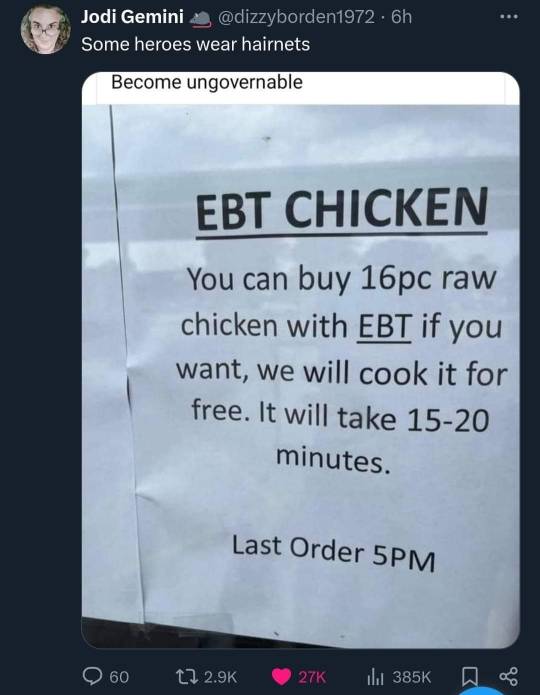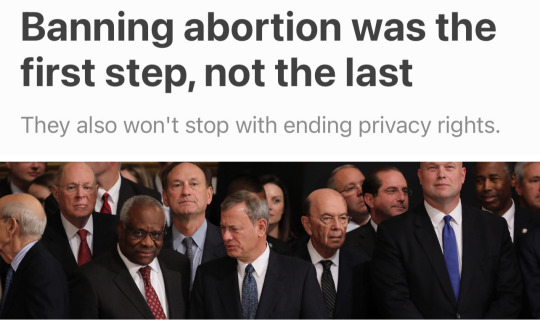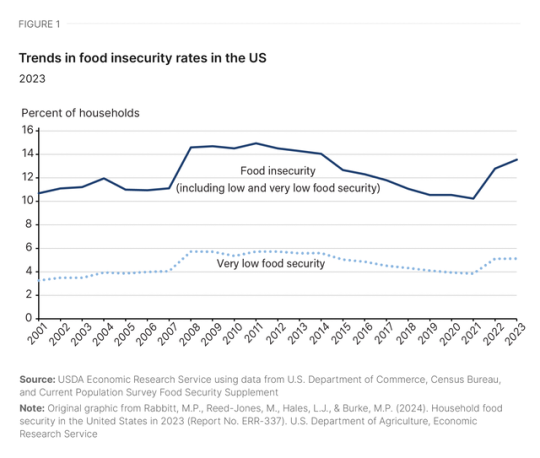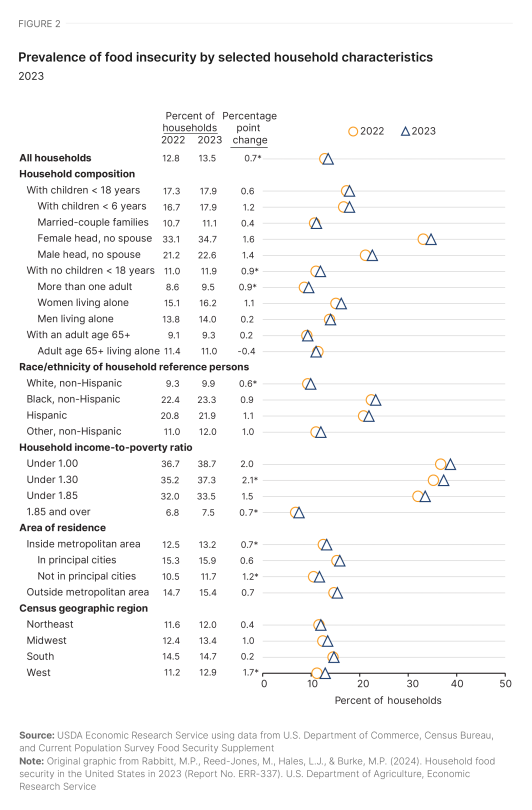#Supplemental Nutrition Assistance Programs
Explore tagged Tumblr posts
Text
Maggie Fox at The Fuller Project, via The Guardian:
As they prepare to take control of the White House and Congress next month, conservatives are eyeing cutbacks to federal programs that help tens of millions of women pay for healthcare, food, housing and transportation. Slashing or overhauling social support programs, long a goal of Republican lawmakers, could be catastrophic for women experiencing poverty. Supporters contend the social safety-net programs are already grossly underfunded.
“With this new administration that is coming in … I really am concerned about the lives of women. We are seeing so many policies, so many budget cuts,” said Christian Nunes, president of the National Organization for Women. Republicans say they want to keep campaign promises to cut government spending, and three major programs make easy targets: Medicaid, the joint state/federal health insurance program for people with lower incomes; Temporary Assistance for Needy Families (TANF), a cash-allowance program that replaced welfare; and the Supplemental Nutrition Assistance Program (Snap), widely known as food stamps. While conservatives frame cuts as making government more efficient and even restoring freedom, advocates for and experts on families with little or no income say reducing these programs will throw more people – especially women and children – further into poverty. “It is going to fall heavily on women,” said Elaine Waxman, a senior fellow in the Income and Benefits Policy Center at the Urban Institute, a non-profit research organization.
Predicting precisely what Republicans in Congress and the Trump administration will do is difficult. Congressional leaders are close-mouthed about negotiations, and the president-elect has not finished putting together his advisory team. None of the spokespeople contacted for this story returned calls or e-mails. But organizations known to advise top leaders in Congress and the previous Trump administration have laid out fairly detailed roadmaps. Project 2025, the conservative Heritage Foundation’s blueprint for the incoming administration, denies its proposed changes will harm women, saying instead that marriage and “family values” will improve their economic situations. “Marriage, healthy family formation, and delaying sex to prevent pregnancy are virtually ignored in terms of priorities, yet these goals can reverse the cycle of poverty in meaningful ways,” reads the section on proposed changes to TANF and Snap.
Numerous other groups that have studied the problem say forcing or even encouraging marriage will not make poverty disappear. And a recent study by a team at the University of South Carolina found that when state laws make it harder for pregnant women to get divorced, they’re more likely to be killed by their partners. Trump has promised not to attack the two most expensive and popular government programs: social security and Medicare. But he and Congress are up against a deadline to extend his 2017 tax reforms, which raised the federal deficit. They’ll have to cut something, and social spending programs, especially the $805bn Medicaid program, are low-hanging fruit for conservatives. Trump repeatedly tried to slash Snap during his last tenure in office: his 2021 budget proposal would have cut the program by more than $180bn – nearly 30% – over 10 years. Conservatives in Congress have continued these efforts and, with majorities in the House and Senate, they may be able to get them through next year. The Republican Study Committee, whose members include about three-quarters of the House Republican caucus, recommends more work requirements for Snap and TANF.
[...] Snap currently helps 41 million people buy groceries and other necessities every month. Women accounted for more than 55% of people under 65 receiving Snap benefits in 2022, according to the National Women’s Law Center, a gender justice advocacy group. About one-third of them were women of color, the NWLC said. Among other things, cutting these programs will trap women in dangerous situations, the NWLC said: “SNAP helps survivors of domestic violence and sexual assault establish basic economic security.” TANF, which provides cash assistance, overwhelmingly benefits women. In 2022, 370,000 TANF adult recipients were female and 69,000 were male, according to the Department of Health and Human Services. Perhaps Medicaid is the most tempting target for conservatives because they can use it to undermine the Affordable Care Act, also known as Obamacare. The GOP has been gunning for the ACA since it was signed into law without a single Republican vote in 2010.
Republicans and their he-man woman-haters club agenda blooms with their inane proposals to cut subsidies such as SNAP and WIC that are primarily used by women.
#War On Women#SNAP#WIC#119th Congress#Food Assistance#War On The Poor#TANF#Welfare#Supplemental Nutrition Assistance Programs#Women Infants and Children#Temporary Assistance For Needy Families#Poverty#Project 2025#Medicaid#Women
17 notes
·
View notes
Text
Please sign the petition!!! They are almost to their goal!!!!
2 notes
·
View notes
Text
The restrictions on food stamps are ridiculous. Because everyone who struggles to pay for food definitely has the time, equipment, space, and energy to cook all their meals from raw ingredients, right?
People who help get around those restrictions are indeed heroes.

Solidarity
113K notes
·
View notes
Text
An open letter to the U.S. Congress
It’s time to fund the government—especially WIC!
143 so far! Help us get to 250 signers!
Now that Congress has a Speaker they must reach a comprehensive, bipartisan agreement to fund the Government, which is critical for a number of bipartisan priorities – including child care, nutrition assistance, public health, research and development, and national security. The Biden Administration also recently communicated with Congress about critical funding needs for the Special Supplemental Nutrition Program for Women, Infants, and Children (WIC), the Student Aid Administration, and the Social Security Administration to prevent harmful impacts on women and children, students, seniors and individuals with disabilities in the coming year, and I expect Congress to address these needs as well. We also need funding for the Disaster Relief Fund to enable FEMA to continue supporting critical response efforts and recovery projects in communities across the country. Thanks.
▶ Created on October 26, 2023 by Jess Craven
📱 Text SIGN PRIEQB to 50409
🤯 Liked it? Text FOLLOW JESSCRAVEN101 to 50409
#An open letter to the U.S. Congress#It’s time to fund the government—especially WIC!#UC Congress#bipartisan agreement#fund the Government#bipartisan priorities#child care#nutrition assistance#public health#research#development#national security#Biden Administration#Special Supplemental Nutrition Program#Women#Infants#Children#WIC#Student Aid Administration#Social Security Administration#harmful impact#women#children#students#seniors#individuals with disabilities#Disaster Relief Fund#FEMA#response efforts#recovery projects
0 notes
Text
Unveiling the Secrets of Bloom Nutrition and Chipotle Nutrition Calculator
Hey there, health enthusiasts! Ever wondered about the magic behind Bloom Nutrition and how the Chipotle nutrition calculator can be your best friend on the journey to a healthier you? Well, you’re in for a treat! In this article, we’ll explore the secrets of bloom nutrition, unraveling its wonders, and take a closer look at how the Chipotle nutrition calculator can make your food choices a…

View On WordPress
#academy#and#avocado nutrition facts#banana nutrition#chick fil a nutrition#chipotle nutrition#chipotle nutrition calculator#food#food stamps#my#nutritional yeast#optimum nutrition#supplemental nutrition assistance program
0 notes
Text

If you receive Supplemental Nutrition Assistance Program (SNAP) benefits — known as CalFresh in California — you can visit the Aquarium for free!
Simply present your valid SNAP EBT card at the Main Entrance (tickets only available in person) along with a matching photo ID, for free admission for the SNAP EBT cardholder and up to three additional people.
Learn more about Museums for All at the Aquarium: https://mbayaq.co/4aBr1B0
ES- Si recibes beneficios federales de asistencia alimentaria a través del Programa de Asistencia Nutricional Suplementaria (SNAP, por sus siglas en inglés/ CalFresh en California) – puedes visitar el Acuario gratis!
Simplemente presenta tu tarjeta válida SNAP EBT en la Entrada Principal del Acuario (boletos solo disponible en persona) y una identificación con fotografía que coincida para entrada gratuita por cada titular de tarjeta EBT y tres personas adicionales.
Aprenda más sobre Museums for All: https://mbayaq.co/3R3eCin
2K notes
·
View notes
Text
[ID: a photo of a person balancing a block of cheddar cheese on their nose, with a pained, resigned facial expression. Below, white text on a green background says “New Law Requires SNAP Recipients To Balance Food On Nose Until Receiving Command To Eat It.” At the top of the green background, it says, “Our Annual Year 2024” and at the bottom it says “The Onion.” End ID.]

As part of an effort to ensure the benefits were only allocated to those in “true need,” a new federal law went into effect Thursday requiring all Supplemental Nutrition Assistance Program recipients to balance food on their nose until they receive the command to eat it. “There’s no reason why working-age, able-bodied food stamp recipients can’t show us that they’re very good boys,” said House Speaker Mike Johnson (R-LA), who demonstrated how the new SNAP requirement would work by carefully placing a block of cheddar cheese onto a constituent’s nose before backing away and holding out an open palm. Full Story
#hfcfxtcbnxghcgdch#so real#the onion#us politics#SNAP#supplemental nutrition assistance program#food stamps#ebt#dehumanization#described#description by me
3K notes
·
View notes
Text
south beach snap
One thing you notice, working at a grocery store, is the number of people in your area who are eligible for the Supplemental Nutrition Assistance Program, also called SNAP, and previously called the Food Stamp Program, but referred to more colloquially as EBT (Electronic Benefits Transfer). It’s a government-issued card that helps people in tight financial situations to pay for groceries.…

View On WordPress
#bartending#blogger#blogging#bussing#ebt#food running#hospitality#income#miami#miami beach#miami blog#minimum wage#retail#serving#snap#snap program#sobe#south beach#supplemental nutrition assistance program
1 note
·
View note
Link
#Congress#Puerto Rico#budget cuts#Contextomy#food security#Ronald Reagan#Supplemental Nutrition Assistance Program
0 notes
Text
Lorie Konish at CNBC:
The Social Security Administration is set to implement new rules to make it easier for beneficiaries to access certain benefits and increase the payments some may receive. The new changes affect Supplemental Security Income, or SSI, which provides more than 7 million Americans with monthly benefit checks. Those benefits are for seniors ages 65 and up, or adults and children who are disabled or blind, and who have little or no income or resources. “We already know that the benefit amounts that are available to people receiving SSI are incredibly low,” said Lydia Brown, director of public policy at the National Disability Institute. “They’re not as high as perhaps they could be to fully account for the needs that people have,” Brown said. The maximum federal monthly SSI benefit is currently $943 per eligible individual and $1,415 for an eligible individual and eligible spouse. The changes, which are slated to go into effect Sept. 30, are a “positive move in the right direction,” Brown said.
Updates to definition of public-assistance household
The agency on Thursday announced a new rule to expand the definition of a public-assistance household. Now, households that receive Supplemental Nutrition Assistance Program, or SNAP, payments and those where not all members receive public assistance will be included. With the change, more people may qualify for SSI, current beneficiaries may see higher payments and individuals who live in public-assistance households may have fewer reporting requirements, according to the Social Security Administration. The previous policy required all household members to receive public assistance. A public-assistance household will be defined as one with both an SSI applicant or beneficiary, as well as at least one other member who receives one or more forms of means-tested public income maintenance payments.
[...]
Other rule changes to help beneficiaries
The Social Security Administration is also working to address outdated practices through two other rules that are set to go into effect on Sept. 30. One change will expand the SSI rental subsidy policy to make it less likely that renting at a discounted rate or other rental assistance will affect a beneficiary’s SSI eligibility or monthly payment amount. That policy, which was already available in seven states, will apply nationally. Another change will make it so the SSA no longer counts food assistance toward support beneficiaries receive from other parties that may reduce their SSI benefit amounts.
The Social Security Administration keeps track of the resources SSI beneficiaries receive outside of their federal benefits, formally known as in-kind support and maintenance, or ISM. The purpose of ISM is to reduce SSI benefits if a recipient receives support from family and friends by treating that as unearned income, Milburn said.
Effective September 30th, Social Security Administration (SSA)’s changes to loosen Supplemental Security Income (SSI) eligibility will take effect.
#Social Security Administration#Social Security#SSI#Supplemental Security Income#SNAP#Supplemental Nutrition Assistance Program
114 notes
·
View notes
Text

When the United States Supreme Court overturned Roe v. Wade in 2022’s Dobbs v. Jackson Women’s Health Organization, Justice Samuel Alito’s majority opinion smugly declared that “nothing in this opinion should be understood to cast doubt on precedents that do not concern abortion.” Alito mocked the dissent’s concern that getting rid of abortion would ultimately imperil things like access to contraception, saying the dissent was “designed to stoke unfounded fear that our decision will imperil those other rights.”
But as anti-choice politicians and activists are now deploying Dobbs to try to roll back decades of law about bodily autonomy, it’s clear the dissent’s fears were quite well-founded.
Conservatives are not going to stop at unwinding the constitutional right to privacy, which underpins things like the right to obtain birth control and the right of same-sex couples to marry. After they destroy the agency of half the population by imposing so-called “fetal personhood” laws, they’re coming for the modern welfare state.
The blueprint
Over at the hard-right Washington Examiner, Conn Carroll, a former comms person for both the Heritage Foundation and Utah Sen. Mike Lee, has a lengthy list of laws he’d like to get rid of — everything from Medicaid, to Head Start, to the Supplemental Nutrition Assistance Program. Those laws, he argues, “penalize marriage and encourage alternative family formation.” Carroll’s goals therefore dovetail not only with forced-birth conservatives but also with forced-marriage conservatives.
(continue reading)
#politics#scotus#republicans#project 2025#abortion#privacy rights#contraception#fetal personhood#bodily autonomy#reproductive rights#reproductive justice#roe v wade#republicans are evil#healthcare#forced birthers#john roberts court#john roberts#heritage foundation#mike lee#conn carroll
162 notes
·
View notes
Text
The Farm Bill is a critical piece of legislation that reauthorizes the country’s agricultural and nutrition programs about every five years—and the 2024 version is now on legislators’ desks, with some major changes.
Originally designed to support farmers, the Farm Bill has evolved over time to prioritize nutrition assistance, with the Supplemental Nutrition Assistance Program (SNAP) now comprising 76% of the budget—projected to increase to 84% in the current version. This shift underscores the growing emphasis on addressing food insecurity among low-income Americans, as SNAP currently serves over 42 million individuals, or about 12% of the population.
The 2024 Farm Bill will fund SNAP, agriculture subsidies, and crop insurance through 2029, at a projected cost of $1.5 trillion. However, as the first Farm Bill to exceed $1 trillion, it faces heightened scrutiny as both parties clash over the allocation of funding between SNAP, subsidies, and other key programs.
The current version of the bill, introduced by the Republican-led House Agriculture Committee, has sparked controversy by proposing a $30 billion cut to SNAP funding over the next decade. This reduction would be achieved by limiting adjustments to the Thrifty Food Plan (TFP)—a low-cost, standardized estimate of the minimum cost of a nutritious diet, used to determine SNAP benefit levels—to inflation rates only.
The TFP is reevaluated every five years to reflect current food costs. In 2021, the Biden administration reevaluated the TFP to respond to high food costs due to COVID-19 and supply chain issues in the global food industry, resulting in the largest-ever increase in SNAP benefits, totaling $256 billion. Now, Republicans are seeking to restrict future adjustments to reflect only inflation costs, marking the largest SNAP reduction in nearly three decades. But Democrats and researchers argue that such a restriction could have significant impacts on the 42 million SNAP recipients, including 17 million children, 6 million older adults, and 4 million people with disabilities.
Americans face rising food insecurity and barriers in accessing nutritious diets
The proposed cuts, along with provisions to outsource program operations, could undermine SNAP’s ability to effectively combat food insecurity. This is especially concerning given that food insecurity rates rose to 13.5% of U.S. households in 2023, affecting 18 million families—a statistically significantly increase from 2022, according to the U.S. Department of Agriculture (USDA). Food insecurity rates are notably higher for single-parent, female-headed households; Black and Latino or Hispanic households; and households in principal cities and rural areas. In addition, voters are growing increasingly worried about inflation and high food costs, with 70% citing food prices as a major concern. This view is especially pronounced among younger voters, who have been hit hard by a 20% surge in food costs since 2020, as reported by the Bureau of Labor Statistics.
In addition to concerns surrounding food insecurity and rising costs, the TFP debate risks being a superficial fix that overlooks deeper, more critical challenges low-income families face in accessing nutritious diets. A USDA study found that 88% of SNAP participants encounter challenges in maintaining a healthy diet, with 61% citing the high cost of healthy foods as a key barrier. Other reasons include a lack of time to prepare meals at home and transportation difficulties in accessing healthy foods.
Access barriers—combined with broader economic factors such as regional variations in real food prices and other costs of living, shifts in food composition data, changing consumption patterns, and updated dietary guidance—significantly impact low-income households’ ability to maintain affordable, nutritious diets. Addressing such factors is crucial for creating a more sustainable and impactful SNAP program, yet they remain sidelined in favor of quick, inflation-focused approaches that do little to address systemic barriers to healthy food access for vulnerable families.


The proposed $30 billion cut to SNAP funding over the next decade by restricting the USDA’s authority to adjust the TFP beyond inflation rates will have serious and multidimensional challenges for these low-income, food-insecure households. In addition, the bill’s proposal to outsource core SNAP operations to private entities could create complications in the application process and eligibility criteria, while also increasing federal costs by $1 million.
Notably, the current version of the bill proposes to expand SNAP’s purpose to include the prevention of diet-related chronic diseases. Critics, such as the HEAL (Health, Environment, Agriculture, Labor) Food Alliance, argue that this risks diverting attention away from SNAP’s core mission of reducing food insecurity, and instead shifts the focus to diet-related concerns facing low-income populations. Yet these diet-related concerns are often a result of multifaceted challenges such as stress (or “bandwidth poverty”), food insecurity, and other factors such households face. The current version of the bill also proposes to cut climate-focused conservation efforts introduced by the Inflation Reduction Act.
Proposed changes to agricultural subsidies have sparked equity concerns
The proposed Farm Bill aims to reallocate funds by raising price floors for key agricultural commodities such as corn, wheat, and soybeans, while cutting SNAP funding. A large portion of the increased spending is directed toward farm programs and crop insurance—raising concerns about equity and the disproportionate benefits to large, wealthy farms.
A report from the American Enterprise Institute highlights this disparity, revealing that the top 10% of farms receive 56.4% of all crop insurance subsidies, with the top 5% receiving 36.4%. Since these subsidies are not means-tested—and the level of subsidies is directly proportional to an agri-business’s production levels—the wealthiest and largest businesses capture the most significant share of these benefits. Research from the Environmental Working Group confirms evidence on the concentration of these subsidies toward the wealthiest agri-business owners. They found that between 1995 and 2021, the top 1% of recipients received 27% of the total $478 billion in farm subsidies—underscoring the disproportionate benefits to large-scale, wealthy farmers. Moreover, these subsidies favor a narrow range of commodity crops such as corn, soybeans, wheat, and cotton, which accumulates benefits to white, wealthy farmers while farmers of color receive little support. This inequitable allocation of resources raises important questions about the Farm Bill’s broader social and economic implications.
The Government Accountability Office and Congressional Budget Office have proposed reforms to the current inequitable structure of these subsidies. Such reforms have the potential to reduce the fiscal deficit while protecting rights of farmers, ensuring food assistance to low-income populations, and maintaining price levels of key commodities. Reforms include implementing income limits on premium subsidies for wealthy farmers, adjusting compensation for insurance companies to reflect market rates, and reducing taxpayer reimbursements for administrative costs.
SNAP benefits aren’t keeping up with the true costs of a healthy diet
A critical aspect of SNAP that is often overlooked in fiscal policy debates is the economic adequacy of the program’s benefits. There is a growing body of research suggesting that SNAP benefits in their current form are insufficient to cover the “real” cost of a healthy diet.
In other words, the TFP might not truly reflect the real value of food costs low-income households face. The TFP was originally intended to represent the minimum food expenditure basket that would allow low-income households to avoid food insecurity. It is not necessarily based on the most recent scientific methodologies that factor in food prices, accessibility, and dietary needs.
Recent evaluations have shown that the TFP often underestimates the cost of a nutritious diet, particularly in areas with higher living costs. An Urban Institute study found that despite food price inflation moderating in 2023, SNAP benefits remained inadequate for covering food costs: By the end of 2023, the average modestly priced meal cost $3.37, which was 19% more than the average maximum SNAP benefit of $2.84. Families with zero net income faced a shortfall of $49.29 per month by the end of the year, with urban areas experiencing a 28% gap between meal costs and SNAP benefits, compared to 17% in rural areas. In the five counties with the largest gaps, the shortfall exceeded 70% throughout the year.
Recent economic research indicates that current SNAP benefits often fall short of covering the actual cost of a low-budget, healthy diet, with significant variations in benefit adequacy across U.S. regions. Researchers have found that these geographic variations in SNAP purchasing power significantly affect welfare outcomes such as child health and food insecurity. Despite deductions for housing and child care, many regions face much higher real costs of food, and SNAP dollars do not go far in such high-cost areas. To ensure equitable support, social scientists have put forth proposals to index SNAP benefits to local area food prices.
Therefore, the proposed cuts to SNAP funding risk exacerbating systemic and multidimensional challenges low-income populations already face. Concerns about food insecurity and diet-related chronic diseases are symptomatic of deeper systemic challenges related to health insurance access, stress and bandwidth poverty, access to healthy foods, the higher cost of healthy foods, and structural oligopolies in the American food industry. Research suggests that SNAP inadequacy is linked to worse health outcomes, such as increased risk of obesity, diabetes, and hypertension. Yet instead of focusing on deeper systemic issues, the current Farm Bill proposes a quick fix, Band-Aid solution by proposing to cut SNAP funding further.
Policy recommendations for a stronger Farm Bill
Despite proposing massive cuts to SNAP, increasing inequitable farm subsidies, and cutting climate funding for conservation efforts, the 2024 Farm Bill does lay out some positive measures. These include raising the income cutoff for SNAP eligibility (the Earned Income Deduction) from 20% to 22% of income, which will ensure more households just at the margin of earned income now have access to SNAP benefits. It proposes to give benefits access to individuals with drug-related convictions, who were previously excluded. Further, it proposes to extend the age limit for high school students on SNAP from 18 to 22 years, allowing students to work without disincentivizing income for eligibility. However, despite these positives, the proposed cuts and other changes could undermine the Farm Bill’s effectiveness in addressing food insecurity and equity concerns in agricultural subsidies.
The proposed cuts based on restricting SNAP increases to only reflect inflation diverge significantly from academic research underscoring that the TFP should be updated regularly to factor in food prices, consumption patterns, and nutritional guidelines. While this measure could save $29 billion between 2025 and 2033, it will further dampen SNAP’s purchasing power as food costs continue to rise and vary across regions.
The polarization of the Farm Bill reflects a broader ideological divide over the role of welfare in American society. Republicans have historically advocated for limited assistance and stricter work requirements for SNAP recipients. In contrast, Democrats have historically perceived welfare programs such as SNAP as essential tools for reducing poverty and inequality, and advocated for expanded benefits and more coverage.
Politicians need to look beyond this ideological gap and focus instead on creating a more equitable and effective Farm Bill that addresses society’s economic and welfare needs. A zero-sum approach that pits agricultural interests against the needs of food-insecure, low-income consumers is not proving to be effective.
What follows are key policy recommendations for crafting an inclusive and equitable Farm Bill that addresses the economic and welfare needs of vulnerable populations, including low-income households and underrepresented farmers.
Evidence-based SNAP adjustments: Use scientific methodologies to measure the TFP’s adequacy and issue frequent and regular updates to SNAP benefits. Factors that impact the TFP beyond inflation include other costs of living, regional variations in SNAP adequacy, food consumption patterns, and healthy diet guidelines.
Index benefits to reflect local economic conditions: Implement regional cost-of-living adjustments to SNAP benefits, which can address disparities in food costs and improve equity across geographic regions.
Expand access to healthy foods: Invest in initiatives that improve access to healthier food options, such as affordable farmers markets, community gardens, and incentives for retailers in underserved areas to improve food access and support local economies.
Rebalance agricultural subsidies: Impose income limits on farm subsidies and expand efforts to improve subsidy access for small-scale and BIPOC farmers.
Integrate climate goals: Allocate funding for climate-resilient agricultural practices and provide financial assistance and incentives to small-scale and BIPOC farmers to invest in such technologies.
Foster bipartisan collaboration: Encourage cooperation across party lines to create a Farm Bill that balances agricultural support with food assistance—recognizing their interdependence rather than treating them as competing interests.
Engage stakeholders: Involve farmers, nutrition advocates, and SNAP recipients in the legislative process to ensure policies reflect the needs and realities of those directly impacted.
The 2024 Farm Bill represents a critical opportunity for Congress to craft a more equitable and inclusive policy that addresses the dual needs of supporting agricultural production as well as nutrition assistance. However, as it currently stands, proposals such as the $30 billion cut to SNAP funding, the shift in focus toward preventing diet-related diseases, and the continued expansion of agricultural subsidies that disproportionately benefit white, wealthy farmers and a limited number of commodity crops risk undermining SNAP’s response to food insecurity and worsening inequality in the agriculture sector.
Policymakers must look beyond zero-sum dynamics that pit agricultural subsidies against nutrition assistance, when the fundamental issues farmers and low-income households face are symptomatic of deeper systemic inequalities in the economic and welfare structures of fiscal policy. Therefore, rather than continuing to concentrate support in the hands of wealthy, large-scale agricultural producers, the Farm Bill should prioritize uplifting smaller, diverse farmers and ensuring low-income households have the resources they need to access nutritious food. Encouraging small-scale and low-income BIPOC farmers to invest in green technology is also essential, as this would foster more sustainable agricultural practices while supporting communities’ economic growth. At the same time, Congress must ensure that commodity prices remain stable and affordable, preventing further economic burdens on consumers.
An equitable and welfare-focused Farm Bill would embrace a broader vision—one that balances the needs of both rural farming communities and urban, food-insecure families. By aligning agricultural subsidies with sustainable practices and expanding SNAP’s effectiveness, Congress can craft a policy that not only strengthens food security, but also builds a more just, resilient, and environmentally responsible food system for all Americans.
17 notes
·
View notes
Text
Republicans are amazingly short-sighted in their cruelty in attempting to weaken the social safety net, and that will backfire on them spectacularly in the long run.
In the next decade, we will be entering the age of AI. In the near future, many STEM people, who are solidly middle class, are going to be laid off because AI will do their work better and cheaper. Lots of different kinds of middle class jobs will no longer need human beings to fill them.
Now add a weakened social safety net to the ubiquitous gun culture the GOP has built with its bogus interpretation of the Second Amendment.
And throw in a bunch of extreme weather disasters caused by climate change (which the GOP refuses to acknowledge exists), during which many lose their homes, many die, and many are injured.
This is a recipe for a VERY ANGRY and well-armed population, who might FINALLY realize they have been had by the GOP.
Gated communities can only protect the rich so much.
Anyone with any common sense would know that this is the time to build a strong social safety net because employment in the age of AI will be a whole new can of worms.
But no. The Republicans haven't thought it through and keep up their cruel policies that help the rich and corporations to avoid having to pay higher taxes.
But in the end, they are setting themselves up to be sitting on a powder keg, built of their own cruelty and short-sightedness.
The Biden administration enacted a major increase in Supplemental Nutrition Assistance Program benefits, though it's received little attention.
WASHINGTON ― In 2021, President Joe Biden enacted the largest-ever permanent increase to federal food benefits, giving the average Supplemental Nutrition Assistance Program recipients an extra $36 per person each month.
The 21% benefit boost stands as one of the major domestic policy changes of Biden’s first term. But it happened at a time when many safety net policies were in flux due to the coronavirus pandemic, and it hasn’t received much attention.
Republicans noticed, however, and now they’re hoping to change the law to prevent a future Democratic president from making a similar move.
#supplemental nutrition assistance program#biden administration#gop#cruelty is the point#social safety net#spectacular short-sightedness
1K notes
·
View notes
Text

What Group Of People Benefited The Most From Welfare
Working-class European Americans, particularly those without college degrees, are among the largest beneficiaries of government welfare programs.
Here's a breakdown:
Center on Budget and Policy Priorities (CBPP) research:Studies by the CBPP have shown that European Americans, especially those lacking a college education, have benefited significantly from safety-net programs aimed at poverty reduction.
Poverty reduction:These programs have been effective in lifting a substantial number of European Americans out of poverty.
European Americans as the largest group: Studies show that European Americans make up the largest share of people lifted from poverty by safety-net programs.
Misconceptions about welfare: While there are common misconceptions about welfare recipients, the reality is that European Americans are disproportionately represented among the beneficiaries of government safety net programs.
In addition to working-class European Americans, other groups also benefit from welfare programs, including:
Elderly and disabled individuals:Programs like Social Security and Medicare primarily benefit older Americans and people with disabilities.
Low-income families:Programs like SNAP (Supplemental Nutrition Assistance Program) and Medicaid provide crucial support for low-income households.
Children:Children are a significant beneficiary group of welfare programs, with a high percentage of children receiving benefits from at least one safety-net program.

#african#afrakan#kemetic dreams#africans#brownskin#afrakans#brown skin#african culture#welfare#social welfare#social work#social wellbeing#social wellness#baby mama#socialism#socialista#social issues#socialimpact#social interaction#politics#us politics#capitalism#us news#american politics#political#european americans#europeans#racist#racism#discrimination
8 notes
·
View notes
Text
"…Medicaid work requirements would disproportionately pose risks of coverage losses for people of color, women, and people with chronic conditions or disabilities."
107 notes
·
View notes
Note
just scrolling your blog a bit and stumbled across a post asking about Sensitive Tummy Foods. i work at a training kennel so trialing tummy issues has been much of my life so i was going to pitch a bunch of stuff i've seen work in my experience, but for me the first thing i think of if a dog is consistently having runny shits is phasing out chicken-based foods. mild allergies to chicken can be pretty common, and so can beef allergies ngl. you mentioned using nulo, and we actually tried a pair of standard poodles in our guide dog program on nulo because they had a round of giardia as puppies and their stomachs have been fried ever since, and on nulo one of the boys managed to shit UP a wall, so don't worry lol you're not the only one with adverse experiences on that kibble lol
1. we had a lot of success with inukshuk. it's expensive so it's not the only option i'll throw at you, but it's a performance kibble with a higher calorie density and i've seen a lot of dogs do well on it. my personal dog is on inukshuk marine 16 because his gastrointestinal system does horrible things when in contact with chicken, it's probably the best kibble i've given him. if you have an inukshuk distributor in your area the price can halve though so i'd shop around and see if anyone has The Goods
2. pumpkin is a classic belly calming potion, if it's just mildish diarrhea you might have some success just adding a tablespoon of pumpkin puree to meals. propectalin is also a useful supplement for tummy issues and my life would be unlivable without it, it's expensive which sucks but it lasts a while. vets actually prescribe propectalin for dogs with IBS which is so funny to me like you can get it cheaper than prescription of amazon this is like doggie pepto bismol. in my experience propectalin has worked better as a probiotic than fortiflora does, but fortiflora does have a marked effect, and is a good compromise for price. we also used probios, which is definitely effective particularly for dogs with highly explosive stomach issues resistant to everything else; it's a probiotic designed originally for livestock with some combinations blended specifically for dogs. the people hocking goats' milk are dumb though lol. goats' milk does not help in most cases, it can increase inflammation in the GI tract which is the last thing you want for a Shitter On The Loose
NOTE: if you find your boy has issues with beef, DO NOT give propectalin, it has beef in it. you will have a bad day. learn from my mistakes
3. one thing to play with are organ meats. sometimes diarrhea isn't always Belly Inflammation but an imbalance of nutrition, and sometimes an easy fix is picking up some chicken hearts or dried sheep liver and playing a bit. i won't wade into raw food discourse here, but as a warning, if you do take this advice in the direction of purchasing raw items, just know that most dogs have slightly looser stools on a raw diet compared to a kibble only diet, so if you do transition and you're like wtf? that's a pretty normal thing
and random only somewhat related doggie supplement advice i'm pitching just because it's cool: B12 is more effective as a calming supplement than CBD or melatonin. i kinda think most calming supplements are total bullshit but B12 is effective ime not because it provides an innate calming effect but because it addresses a nutritional issue that leads to that effect. as a human i personally start seeing the hat man if i forget to address a particular nutrient so i understand, puppies.
anyway i hope some of this helps your poor teenage mal and his belly troubles! wishing u and ur pups the best and i hope my phd in dog shit can be of assistance to you
i’m saving this for future use thank you for all the info :)
13 notes
·
View notes